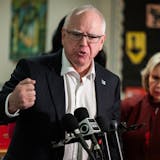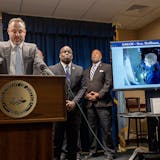Educators and administrators in the Minneapolis and St. Paul school districts all say they are committed to regaining stability after two of the most turbulent years students and staff have ever faced.
But the path toward stability is proving hard to agree upon.
After months of increasingly tense contract negotiations, unions representing teachers and support staff in both districts voted last week to authorize strikes, if necessary. Should the unions choose to go that route, they must give the school districts 10 days notice.
"We have tried everything else," said Greta Callahan, president of the teacher chapter of the Minneapolis Federation of Teachers. "A strike is a last resort, and we are really hoping that our leaders are going to do the right thing for our kids because all of this can be avoided."
Shifts to and from distance learning, widespread staffing shortages and a rise in student mental health and behavior issues have overstretched and stressed teachers in all corners of the state. Union leaders say teachers need more help to meet students' needs and higher wages to ensure educators come into the schools and stay. They point to federal relief funding and the state's $7.7 billion surplus as ways to fund the requests.
But district leaders say the requests don't fit into the budget, particularly amid plummeting enrollments. Fewer students mean less state funding for schools, and the federal relief money comes with expiration dates and recommendations against spending it on costs that would outlast the funds' sunset date.
In a news conference this month, St. Paul Superintendent Joe Gothard noted the challenges of the COVID-19 pandemic and other events that have left young people hurting.
"Now more than ever, our community needs to come together and support each other," he said.
![A black bear stopped after crossing Big Bay Road on Madeline Island, the largest of the Apostle Islands in Wisconsin, on Monday, May 31, 2021. ]](https://arc.stimg.co/startribunemedia/PWNYGIY3WTSWDBOGOYD775DPP4.jpg?&w=80&ar=1:1&fit=crop)


